One of the first things one pictures upon hearing the term “beis hakevaros” (graveyard) is, of course, the many tombstones arrayed in this solemn and hallowed place. The institution known as “matzeivah” (tombstone) is obviously a time-honored and universally adopted practice. It may be worthwhile, however, to take a moment to reflect upon the nature of this convention. What is the idea behind this custom? Is it merely a practical matter, providing remembrance and a forum of appropriate sentimentalism, or is there something more profound at play here?
To this line of questioning we may add the following: Is there true Torah/halachic significance to this practice? Is there even a source for it?
Inscription from the Scriptures
The short answer (to this last point) is: definitely so. Perhaps the most familiar reference comes from the Torah’s narrative of Ya’akov’s burial of the matriarch Rachel – as it states: וַיַּצֵּב יַעֲקֹב מַצֵּבָה עַל־קְבֻרָתָהּ הִוא מַצֶּבֶת קְבֻרַת־רָחֵל עַד־הַיּוֹם “And Ya’akov set up a matzeivah by her grave; this is the monument of Rachel’s burial until this day” (Bereishis 35:20). In terms of a Mishnaic source, we do find mention of this idea in the Mishnah in Shekalim (2:5), which refers to it by a different (and somewhat curious) name:
מוֹתַר הַמֵּת בּוֹנִין לוֹ נֶפֶשׁ עַל קִבְרוֹ.
“The surplus of (funds designated for) a deceased individual should be used to build a ‘nefesh’ (monument) by his gravesite.”
From the above, we see that some form of memorial in recognition of the deceased is to be placed by his burial site. Technically speaking, however, the above merely informs us that it is proper for some type of monument to be erected. The common practice, of course, entails much more than a mere stone marker. Rather, the standard tombstone is adorned with inscriptions revealing the identity of the deceased. Is this just a practical measure, or is there a source for this aspect as well?
Actually, there is a Scriptural source, and it comes from this week’s parshah. The Torah commentary Moshav Zekeinim (from the Ba’alei Tosafos) points to the very end of the parshah – and the beginning of the next. Speaking of the death of Yosef, the final words of the parshah are: “Va’yisem ba’aron b’Mitzrayim – He was placed in a casket in Egypt” (Bereishis 50:26). The very next words in the Torah – which begin sefer and parshas Shemos – are: “V’eileh shemos ha’anashim – And these are the names of the people” (Shemos 1:1). The Moshav Zekeinim perceives an allusion from this juxtaposition: “From here is an indication that we inscribe the names (shemos) of the deceased on the tombstone, which stands by the top end of the aron.”
In fact, it could be that this practice informs one of the other names by which this item is called. We have already encountered the titles of “matzeivah” and “nefesh.” A third name for this institution comes from the Navi (Yechezkel 39:15), which refers to it as a “tziyun.” This term, conventionally translated as “marker,” carries a connotation of drawing specific attention and focus. Such is the meaning of this root, for example, as it appears in the Pesach Haggadah: וַיְהִי־שָׁם לְגוֹי, מְלַמֵד שֶׁהָיוּ יִשְׂרָאֵל מְצוּיָינִים שָׁם – “‘And they became there (in Egypt) a nation’ (Devarim 26:5): This teaches that Yisrael were distinct there.” As such, this title reflects the practice of including the deceased’s identity on the headstone (cf. Nitei Gavriel, Hilchos Aveilus, vol. II, ch. 66, footnote 9).
Memorial – and Reminder
As to the other names, these have already been elaborated upon in an earlier issue (Mishnas Chayim, parshas Shelach, 5776). The basic idea behind them (as explained there) is that both names highlight the central issue of hasharas hanefesh (immortality of the soul). Thus the tombstone is referred to as “nefesh,” as it serves as a place through which the nefesh (that is, one component of the multi-faceted soul) retains some connection with this earth. The term “matzeivah” reflects a related idea, although in a somewhat ironic fashion. It derives from the root נצב , which literally means “standing” and implies a sense of permanence. As opposed to the focus on “soul” conveyed by the term “nefesh,” the name “matzeivah” highlights the permanence of the body. This is not to suggest, G-d forbid, that the body will forever remain in its current resting place. On the contrary; the matzeivah points to the fact that the body, together with the soul, will exist forever. For at the time of Techiyas Hameisim (Resurrection of the Dead), the two will be reunited to once again walk the earth.
There is another interesting practice observed by some that reflects a similar idea. This is the custom of casting grass or leaves behind oneself upon taking leave of the cemetery. The meaning behind this practice is brought out through an intriguing account cited in the classic medieval work, Machzor Vitry. Apparently, certain nefarious individuals in the city of Paris observed the local Jews performing this ritual. They delivered a slanderous report to the king, claiming that the Jews were engaged in rites of sorcery designed to inflict harm against their gentile neighbors.
The rav – R’ Moshe, grandson of R’ Matisyahu Hagadol (“The Great”) of Paris – was summoned before the king to answer this charge. “Your Majesty,” he exclaimed, “nothing could be further from the truth. This is not our intent at all. Rather, we utilize this grass because of its property of regeneration – grass may be uprooted from a patch of ground and wither away, but soon new grass sprouts up in its place. When we take this grass upon visiting the departed, we demonstrate thereby our belief in the eventual regeneration that will take place with regard to the deceased. Although they presently rest in this place, Hashem will one day restore them to life.”
The king, concludes the Machzor Vitry, was greatly impressed by the response. He actually congratulated the rav and told him the following: “I see that in reality, your practice is quite faithful and true; you are a sacred nation before G-d. Cursed are those who slandered against you – they know not the goodness of your faith” (referenced in Kol Bo L’Yahrtzeit, vol. II, p. 307).









